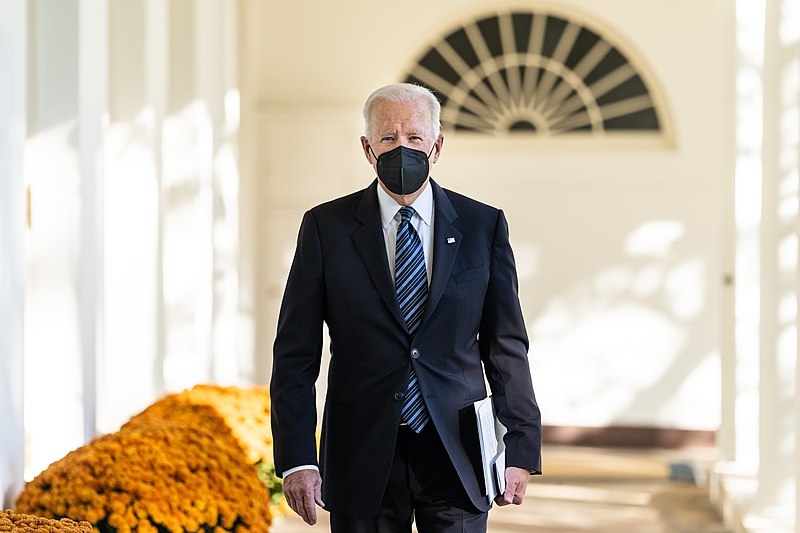US President Joe Biden is set to fulfill a campaign promise by nominating who would become the first Black woman in the Supreme Court. Following a discussion with two Senate Judiciary Committee members, Biden hopes to get his nominee confirmed in a 40-day timeline.
Biden met with Senate Judiciary Committee chair Dick Durbin and its ranking minority member Chuck Grassley at the White House this week to talk about his potential Supreme Court nominees. The US leader said that once he announces his nominee for the high court, he hopes that they would be confirmed by the Senate in a 40-day timeline, similar to the previous nominees. Biden is set to announce his nominee – who will succeed retiring Supreme Court Justice Stephen Breyer – at the end of the month.
“The Constitution says ‘advice and consent, advice and consent,’ and I’m serious when I say that I want the advice of the Senate as well as the consent to arrive on who the nominee should be,” Biden told reporters.
If the 40-day timeline is adhered to, the final Senate vote would be around the spring.
Grassley told reporters that he made it clear to Biden that he wants someone to “interpret the law, not make law” during the meeting.
To note, the previous Supreme Court Justice, Amy Coney Barrett, took 27 days to be confirmed by the GOP-controlled Senate in 2020.
“The president’s view is that after 230 years of the Supreme Court being in existence, the fact that not a single Black woman has served on the Supreme Court is a failure in the process, not a failure or a lack of qualified Black women to serve as Supreme Court Justices,” said White House Press Secretary Jen Psaki during a briefing Tuesday.
In other related news, Biden has relaunched the cancer “Moonshot” initiative during a White House ceremony this week, with the goal of cutting deaths by cancer in the US by half. The effort was launched in 2016 with $1.8 billion in federal funds spaced out over seven years. As of this year and 2023, only $400 million in funds remain for the initiative.



 Chinese Hackers Target US Officials and Dissidents in Cyber Espionage Scheme
Chinese Hackers Target US Officials and Dissidents in Cyber Espionage Scheme  The 50th anniversary of Portugal’s Carnation Revolution
The 50th anniversary of Portugal’s Carnation Revolution  Turkey’s suppression of the Kurdish political movement continues to fuel a deadly armed conflict
Turkey’s suppression of the Kurdish political movement continues to fuel a deadly armed conflict  Who will Trump pick as his running mate?
Who will Trump pick as his running mate?  China's Commerce Minister to Advocate EV Sector in Europe Amid Subsidy, Tariff Probe
China's Commerce Minister to Advocate EV Sector in Europe Amid Subsidy, Tariff Probe  US Commerce Secretary Asserts Huawei Chip Lag, Affirms Export Control Success
US Commerce Secretary Asserts Huawei Chip Lag, Affirms Export Control Success  History for sale: what does South Africa’s struggle heritage mean after 30 years of democracy?
History for sale: what does South Africa’s struggle heritage mean after 30 years of democracy?  US election: two graphs show how young voters influence presidential results as Biden gets poll boost
US election: two graphs show how young voters influence presidential results as Biden gets poll boost  The politics stopping the UK from opening a youth mobility scheme with Europe
The politics stopping the UK from opening a youth mobility scheme with Europe  Georgia is sliding towards autocracy after government moves to force through bill on ‘foreign agents’
Georgia is sliding towards autocracy after government moves to force through bill on ‘foreign agents’  South Africa’s youth are a generation lost under democracy – study
South Africa’s youth are a generation lost under democracy – study  Rishi Sunak wants to cut the cost of ‘sicknote’ Britain
Rishi Sunak wants to cut the cost of ‘sicknote’ Britain  Joe Biden Proposes Record 44.6% Capital Gains Tax in Latest Budget Plan That May Favor Cryptocurrencies
Joe Biden Proposes Record 44.6% Capital Gains Tax in Latest Budget Plan That May Favor Cryptocurrencies  How will US foreign policy affect Joe Biden’s chances of re-election in November?
How will US foreign policy affect Joe Biden’s chances of re-election in November? 































